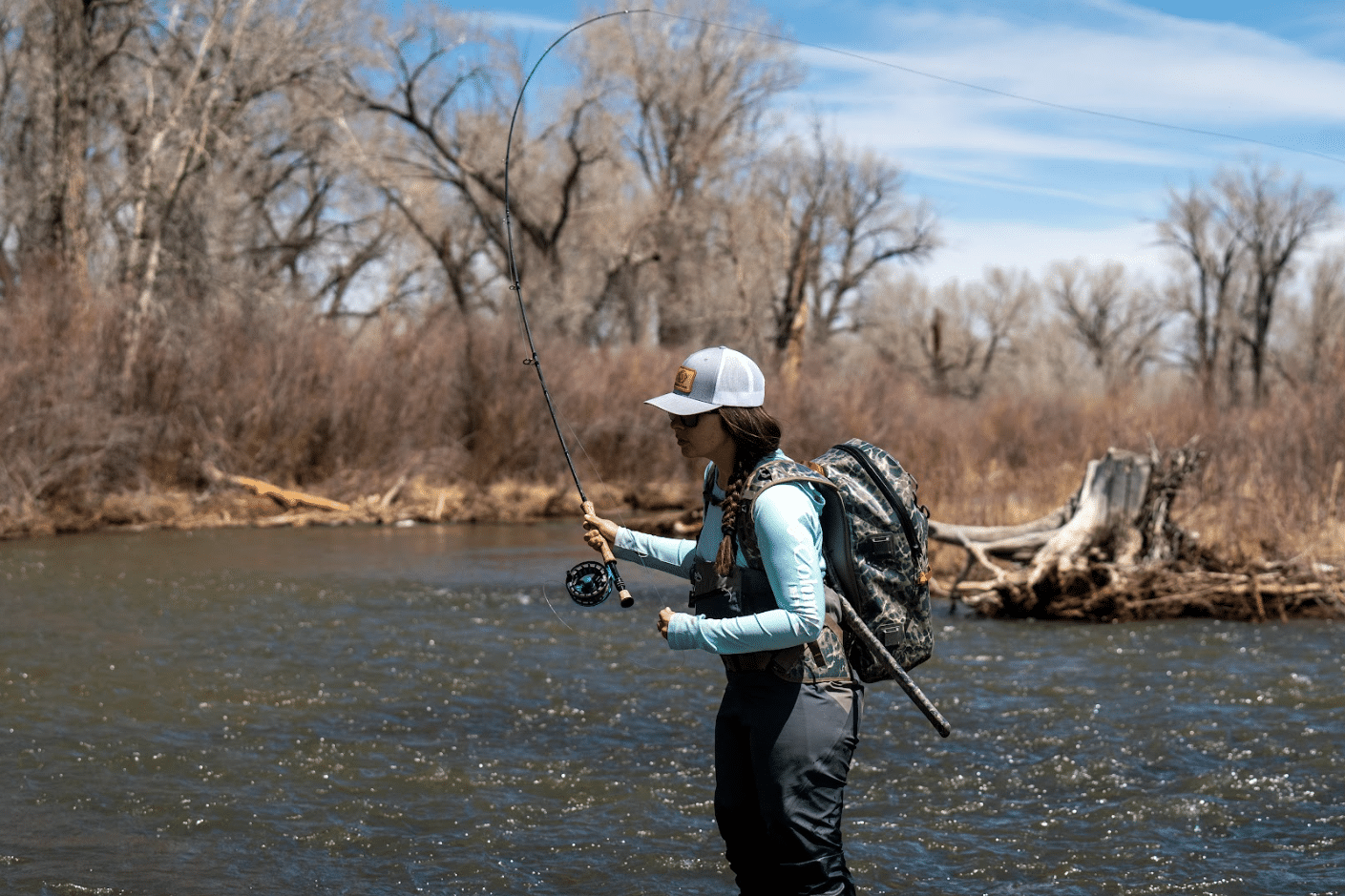The Challenge of Windy Conditions
Fly fishing in windy conditions can be a challenge, but with a few adjustments to your techniques and gear, you can still have a successful day on the water. Here are a few tips to help you navigate windy conditions as a fly angler:
Six Tips for Windy Conditions Success
1. Use a heavier fly line: A heavier fly line will be more resistant to wind and help you cast more accurately in gusty conditions. Consider switching to a line with a higher weight rating or adding a weight-forward line to your setup. Don’t make the mistake of ignoring this advice and ended up in the oh-so-desirable situation when a gust of wind catches your lightweight line and sends it flying into a tree.
2. Use a shorter leader: A shorter leader will help you maintain better control over your fly in the wind. Aim for a leader that is about the same length as the rod you’re using. I learned this lesson the hard way when I ignored this tip and ended up with my leader wrapped around every tree branch and bush within a 50-foot radius. It took me a good half hour to untangle the mess and get back to fishing.
3. Change your casting technique: In windy conditions, you may need to adjust your casting technique to compensate for the wind. One effective technique is the “wind knot,” which involves making a series of shorter, more controlled casts rather than one long, sweeping cast. You can also discover importance of this technique the hard way by ignoring it and ending up with a rats nest that’ll take half your time on the water to untangle.
4. Use a heavier fly: A heavier fly will be more resistant to wind and easier to control in gusty conditions. Consider switching to a fly that is slightly larger or heavier than you would normally use. A friend of mine made the mistake of ignoring this tip and ended up with a frustrating day on the water, as his lightweight flies were constantly blown off course by the wind.
5. Look for sheltered areas: Try to find areas of the river or stream that are protected from the wind, such as behind trees or rocks. These areas can provide a calm environment for casting and fishing. I learned this lesson the hard way when I stubbornly stayed in the open on a particularly gusty day and ended up with a sore arm and zero fish to show for it.
6. Wear appropriate clothing: Windy conditions can be cold and uncomfortable, so make sure to dress in layers and wear a windproof jacket to keep warm. Wind can sneak up on your and suddenly you’re shivering even on bright and sunny day in the middle of summer.
Adapt for Success
By following these tips and making a few adjustments to your techniques and gear, you’ll be well-equipped to handle windy conditions on the fly fishing waters. Remember to use a heavier fly line, shorter leader, and heavier fly to improve your control and accuracy in the wind. Don’t forget to change your casting technique and look for sheltered areas to fish in, and make sure to dress appropriately to stay comfortable. With a little bit of patience and a willingness to adapt, you can still have a successful and enjoyable day of fly fishing in windy conditions.








